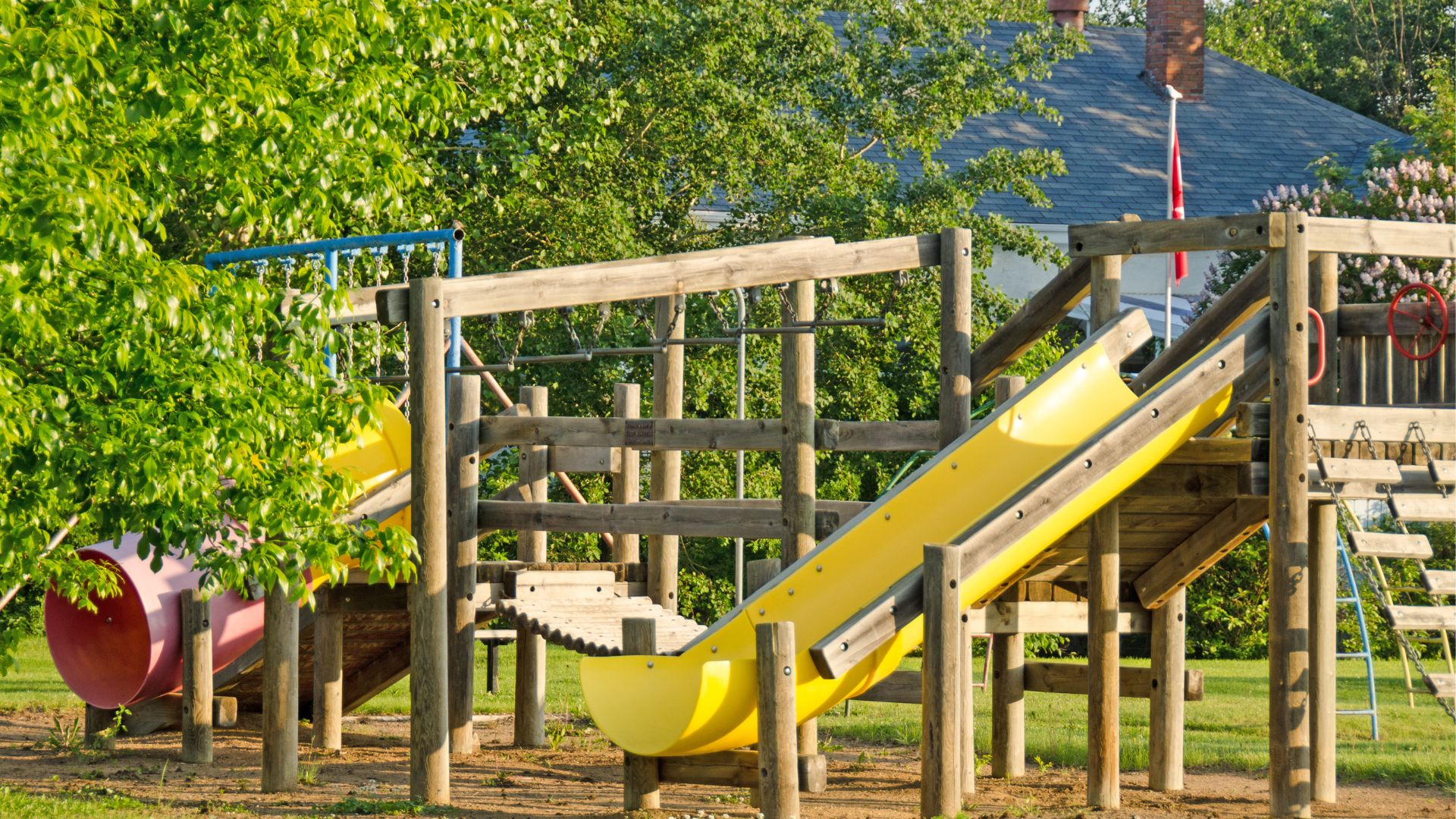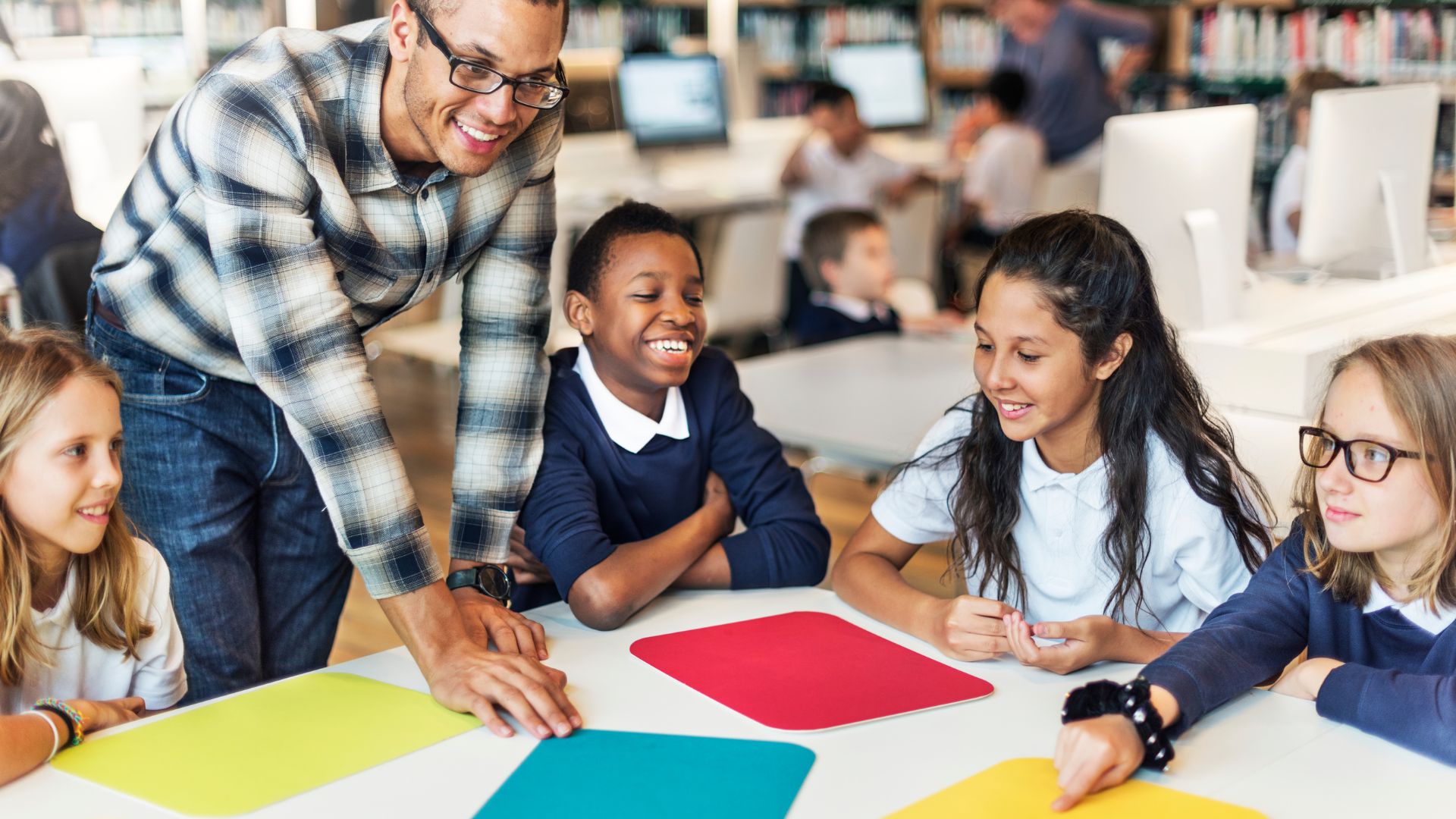How to Build a Sustainable Playground
05 Aug, 20241-2 minutes
In this blog, you will learn:
- Why it is important to build a sustainable playground.
- The benefits of sustainable playgrounds.
- How to build a sustainable playground.
- What makes a good playground design?
- Discover more about education recruitment services.
What’s better than a playground full of fun and amusement? A sustainable playground that promotes learning and a love for the environment! School playgrounds are essential to children's development providing them with positive childhood experiences and hours of entertainment.
Being eco-friendly and building a sustainable playground in your school raises environmental awareness and has the potential to ignite a passion for making a difference.
If you're looking for ways to build a sustainable playground in your school, then look no further! In this guide we have everything you could possibly need to get started on your fun but eco-friendly venture.
Why is it important to build a sustainable playground?
A playground is crucial to provide students with the opportunity to let off steam, have fun and socialise during breaks between lessons. Building a sustainable playground is all about finding greener ways to reuse and repurpose items for a greater purpose.
A playground should be sustainable and durable, so it can be enjoyed for years and bring hours of fun and entertainment. By using recycled and reclaimed materials the playground is guaranteed to have a long lease of life and would be an investment for schools and students. It would also make children aware of the importance of recycling, repurposing and sustainability.
The benefits of sustainable playgrounds
The benefits of sustainable playgrounds:
- Promotes connection with nature.
- Learning opportunities for students
- Long term savings.
Promotes connection with nature
Protecting the planet and preventing climate change is crucial, and teaching children about the importance of biodiversity and recycling has never been more important. There are many ways schools can be eco-friendly and encourage sustainability, from recycling to cutting down on plastics.
Students feel most powerful and engaged when they can connect to what is going on in the world. Active environmental learning fosters a conscientious effort to create a better future, gives students a sense of responsibility towards the environment.
Learning opportunities for students
A sustainable playground provides students with the opportunity to have fun, develop their skills and stay active. A playground that is sustainable provides students with a safe space to play, have fun, and develop their imagination and creativity.
There are multiple physical benefits to playgrounds including the opportunity for students to develop their motor skills, agility and balance.
The different elements and implementation of nature in the playground also provides students with the opportunity to challenge themselves socially and creatively. Playgrounds are beneficial for children’s learning and development including their problem solving skills.
Schools can utilise their sustainable playground to teach outside and celebrate Outdoor Classroom Day.
Long term savings
Not only does having a sustainable playground benefit the students' learning and creativity, but in the long run, a sustainable playground can be more cost effective than that of one made out of plastic or brand new materials.
By using repurposed or recycled materials that have been locally sourced rather than transported, this saves money, reduces carbon emissions and reduces your schools carbon footprint. Wooden playgrounds moisture content is under 20%, meaning it doesn't rot compared to plastic and can last for years as long as it is cared for properly.
How to build a sustainable playground
- Have a plan of action.
- Choose recycled materials.
- Incorporate nature.
Have a plan of action
In order to build a sustainable playground, it is important to have a plan of action and set goals to ensure you have considered every element in the building process. From budget and funding, to labour and materials, it is important to be prepared and familiarise yourself with the building process.
A playground checklist can help you keep track of each element and enable you to make informed decisions throughout the project. Consider how long the process will take, where everything will go and anticipate potential challenges.
In terms of sustainability, ensure that the repurposed materials are of a good quality and are safe to use. Assess the space for the playground, considering any geographical or environmental constraints, and incorporate existing elements of nature into the design to ensure that you are being sustainable in your plans.
Choose recycled materials
Building a sustainable playground means there are plenty of opportunities to be environmentally responsible. Promote environmental practices in your school by considering what materials you are going to use for the playground.
The best way to do this is to use sustainable materials that aren’t harmful to the environment and that can be recycled over time. By responsibly sourcing materials and repurposing already existing items, you can ensure that your school is being sustainable every step of the way.
Utilise reclaimed materials for construction such as recycled plastic, rubber from recycled tyres and reclaimed wood, spares trees from being cut down. Choose new equipment that is made from biodegradable materials and can be recycled over time, to lower landfill waste.
Understanding the importance of reusing objects and materials can help students foster a better relationship with the environment as well as a passion for sustainability. The look and aesthetic of the playground is less important than having a positive impact on the planet.
Incorporate nature
Incorporating nature into your playground doesn’t stop with the use of natural and sustainable materials. There may be opportunities to use the natural elements to create different areas and add to the fun of the playground.
Incorporate trees and utilise greenery in your playground to give students more opportunities to implement nature into their play and develop an appreciation for it. Help biodiversity and let nature flourish with flowers to attract butterflies and bees and give students the opportunity to create birdhouses and gardens.
Teach students about the importance of maintaining gardens, planting trees and appreciating the role every animal and plant plays. By surrounding children with nature and including it in the playground design, it can help with the sustainability mission and focus on encouraging a healthy environment.
What makes a good playground design?
A good playground design should consider:
- Strength and durability.
- Fun zones.
- Meets standards and purpose.
- Surprise elements.
- Basic essentials.
Strength and durability
A playground needs to be durable and stand the test of time so it is important to consider the materials used to ensure it can withstand the elements as well as anything else life throws at it!
Children can be unpredictable and messy, so the playground needs to survive general wear and tear as well as resist anything such as easily chipped paint, dirt and potential damage. Think about different elements that could possibly affect or wear down the materials and equipment to ensure it meets the high safety standards and is durable.
In your design, consider the materials and surfaces you want to use for durability as well as for maintenance reasons. The playground must be strong enough to withstand the elements and hard play, as well as low maintenance.
Fun zones
If possible, divide the playground into different zones to bring different elements and opportunities for fun to the playground. Different zones would utilise the space best and give students more areas to explore. Zones could include a reading corner, opportunities for sensory play, a construction area, a music area, an arts & crafts area and climbing structures.
Dedicated zones would also allow students to choose which area they want to play in depending on their preferences, energy levels and mood. Some children might be overwhelmed by too much noise, and others might prefer to let off steam, running around and climbing.
By separating the spaces, you give children options and variety depending on the activities they want to take part in on a given day.
Meet standards and purpose
At the end of the day, the priority is to make sure the playground meets the right standards and purpose of a playground. Ensure that your design is practical and consider health and safety measures such as if the material you want to use is appropriate for use.
It’s important that your designs have the correct soft fall and impact areas for children to fall and land safely. Consider safety, space and eliminate any risks.
Ensure the playground also meets the standards of the pupils. A good playground should encourage creativity and prioritise children’s interests, so it is important to consider what children would like to see in the playground.
Surprise elements
Make your playground unique and full of opportunity with some surprise elements. Throughout your design, make sure to pay attention to the details and consider the playground through the eyes of a child.
Hidden spots, interesting textures, unexpected sounds and little painted pictures can make and keep a playground intersting. These little secrets and details help bring some more magic to the playground.
Consider how creative you can get with your design to ensure students are entertained, challenged and active even when they least expect it.
Basic essentials
Don’t forget the basic essentials to ensure your school playground is safe and suitable for all children and that you have considered all elements e.g. storage and shelter during the bad weather.
An essential element to your playground design is to include any necessary signage and rules to ensure safety at school. The signage must be effective, so make sure it is easily noticeable, recognisable and readable from a distance, and consider using colours and universal symbols.
In your design include space for bins to avoid any chance of littering, and to add to the eco-friendly mission, make sure you have some recycling stations! Ensure there is space in your design for seats or a seating area for children or adults who want to take a break, cool down or enjoy a moment to sit and chat.
Another great addition for your school playground could be to include a water station or provide access to water for students to be able to cool down and refresh after an intense time playing!
Recruit teaching staff
As a specialist education recruitment agency, we support mainstream and SEND schools with their temporary, permanent and temp-perm staffing needs.
We currently work with hundreds of schools and have exclusive access to some of the best Teachers and Teaching Assistants in the North West.
If you’re struggling to fill a teaching vacancy, why not get in touch with one of our team to see how we can help?
Primary schools - Jimmy Callagher
Secondary schools - Liam Jones
SEND schools - Jamie Heath
Teaching jobs
If you’re searching for your next teaching job, why not take a look at the latest teaching vacancies, or simply upload your CV to be notified when a relevant position becomes available.
Meet Jamie Heath
Who is Spencer Clarke Group?
Established in 2017, we’re a vibrant and progressive recruitment agency based in the heart of the North West.
We continually reimagine the recruitment process to challenge convention and defy expectations; from creating a better recruitment experience to remodelling employee engagement, we thrive off doing things differently and turning heads along the way.
We operate in two sectors:
In eleven specialisms:
Healthcare, Social Care & Nursing
Corporate Functions & Business Support





